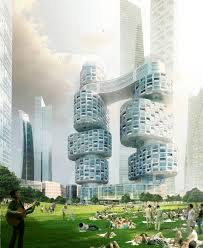Comparison of the climatic indicators of architecture in warm and dry area (case study of Zabol city)
Keywords:
climate, Zabol, Mahoney method, Evans method, Effective Temperature indicator, fabric comfort indicator, and building’s bioclimaticAbstract
In any geographical region we are witnessing thearchitecture formation proportional to the climate with that specific regionthroughout different generations of human life, which is inevitable and whetheryou like it or not it is created due to different and various climaticconditions. These features eventually will manifest themselves in the form ofsome principles or a general formula which indicate to the architecturespecific to that certain climate. However, gradually with the growingachievement of various forms of energy the principles of the compliance of thebuildings with climatic conditions were ignore and this led to an increase inthe usage of energy. The present paper seeks to provide some solutions forcreating comfort with Building design in harmony with the climate throughstudying the warm and dry climate of our country as well as throughidentification of an appropriate architecture indicator for this climate. Forfocusing on this aim, Zabol city with a warm and dry climate has been selectedand with the use of the data and figures adopted from Statistics courtesy ofMeteorological Agency of Iran for a 15 year period and analyzing them in 5climatic indicators including: Mahoney, Evans, effective temperature (ET), fabriccomfort and bioclimatic of the building and human comfort has been studiedconsidering these indicators and the necessary recommendations have beenprovided and finally comfort has been introduced in Zabol climate and suitablepatterns of architecture have been provided for Zabol city that has beenpresented in the conclusion section at the end of the article. Also, in thispaper it is seen that Mahoney indicator suffices for Zabol climate and in caseof necessity and for completing our work we can use Evans indicator as well andthe indicator of fabric comfort can be exclusively used for textureidentification (outside the building) of this climate.
References
Farajzadeh Asl, M., Ghorbani, A., Lashkari, H., 2007. to study the architectural conformity of Sanandaj city
buildings with its bioclimatic conditions with Mahoney method.
Head office of Meteorology of Sistan and Baluchestan province.
Malek Hosseini, A., Dargahi, M.M., 2010. analysis of the characteristics and principles of architecture in
harmony with cold climate (case study of Hamedan).
Malek Hosseini, A., Maleki, A., 2010. climatic effects on traditional and modern architecture of Arak city.
Meteorology organization of Iran located at: Terhan, Azadi square, Me’raj street.
Raazjoyan, M., 2009. Refuge in the comfort of architecture in harmony with climate, Shahid Beheshti
Univ.
Safaeepour, M., Taheri, H.A, 2010. to study the effect of climatic elements in urban architecture: case
study of Lali city. J. urban Res. plan., 1, 2, 103 – 116

Published
How to Cite
Issue
Section
Copyright (c) 2014 Fariborz Hadifard, Navid Yaghoubzadeh, Behdad Pezeshki

This work is licensed under a Creative Commons Attribution-NonCommercial-NoDerivatives 4.0 International License.
